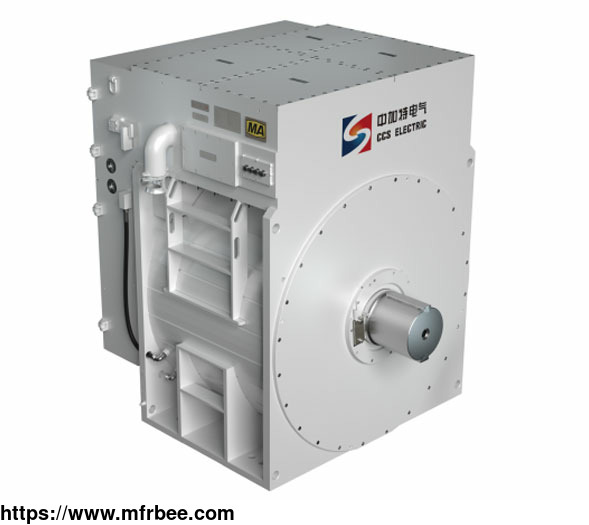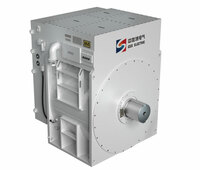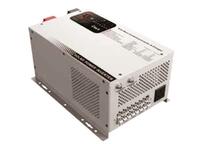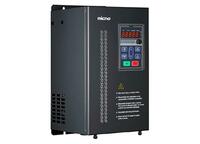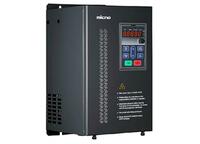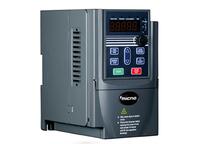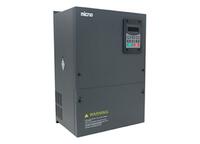PM Integrated VFD Motor
Specifications
VFD for Synchronous Motor Frequency Converter
Intelligent permanent magnet direct drive system is a comprehensive solution for equipment drive and control technology. VFD synchronous motor takes permanent magnet direct drive technology as the
core and adopts special frequency converter, permanent magnet synchronous frequency conversion motor, and water cooler to replace traditional mechanical drive devices such as asynchronous motor,
reducer and hydraulic coupler. At present, VFD synchronous motor is widely used in mines, coal, ports, electric power, building materials, chemical industry, and other fields. Contact us for more
information on vfd compatible motor!
Specifications of the PM Integrated VFD for Synchronous Motor
Voltage range 380V/400V/600V/660V/3300V/4160V/6000V/6600V/10000V
Frequency 50Hz/60HZ
Voltage fluctuation range at grid -15%-10%
Frequency fluctuation at grid ±0.2Hz
Speed range 60rpm,75rpm,90rmp and so on
Output frequency 0-50Hz/60Hz
Power rating 45kW-2000kW
VFD principle Voltage source inverter
Motor type Synchronous motor
Control method V/F or DTC without sensor
Starting torque 2 times
Frequency resolution 0.01Hz
Ingress protection IP54 pr IP55
Installation IMB3 or IMB5
Communication CAN、RS485、Profinet、Ethernet IP etc
Features of VFD for Synchronous Motor
The VFD synchronous motor has the characteristics of high VFD motor efficiency, energy-saving, large starting torque, excellent performance, small maintenance, and intelligent drive.
High efficiency and energy saving
The intermediate transmission link of the vfd synchronous motor is omitted, and the load is directly driven.
No rotor excitation, no rotor copper loss, high rated efficiency.
The light load area has excellent efficiency and high operation efficiency of the motor with integrated VFD.
Even VFD synchronous motor is at 0 speed, there is a relatively large torque
Heavy-duty starting: starting torque up to 2 times rated torque.
Smooth start to reduce the mechanical impact on load equipment.
Automatic step-less speed regulation according to load, reducing power consumption and prolonging the service life of load equipment.
Motor with integrated VFD has a Small starting current, reducing the impact on the power grid and reducing power grid failures.
VFD for synchronous motor has less footprint.
With integrated VFD motor technology, you can install the equipment in the narrow space as shown in our drawing.
What is the difference between synchronous and asynchronous VFD?
The difference between synchronous and asynchronous VFDs lies in the type of power control equipments they are designed to control:
Synchronous VFDs: These are designed to control synchronous motors, which operate at a fixed speed that is determined by the frequency of the AC power supply. Synchronous motors are typically used
in applications where precise speed control is required, such as in industrial processes, robotics, and precision machinery. Synchronous VFDs can maintain the synchronous speed of the motor even as
the load changes, which makes them ideal for applications where precise speed control is critical.
Asynchronous VFDs: These are designed to control asynchronous motors, also known as induction motors, which operate at a speed slightly lower than the frequency of the AC power supply. Asynchronous
motors are commonly used in applications such as fans, pumps, and conveyor belts, where precise speed control is not as critical. Asynchronous VFDs can adjust the speed of the motor by varying the
frequency of the AC power supply, which makes them ideal for applications where energy efficiency and cost savings are important.
In summary, synchronous VFDs are designed for precise speed control of synchronous motors, while asynchronous VFDs are designed for adjustable speed control of asynchronous motors.
For more information about vfd electric motor and transmission substation equipment, please feel free to contact us!
- Country: China (Mainland)
- Address: 4th Floor, Building 1, Invengo RFID Industrial Park, Tongguan Road, Jiazitang, Guangming District, Shenzhen, China,
- Contact: micno .com
